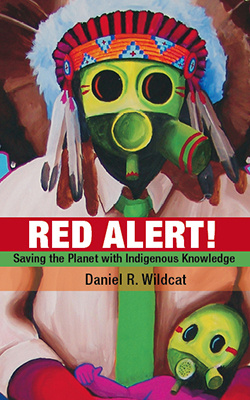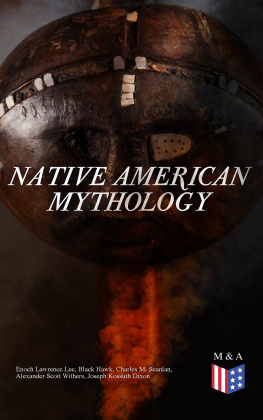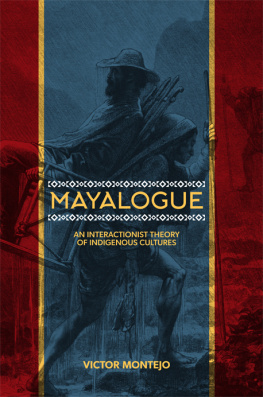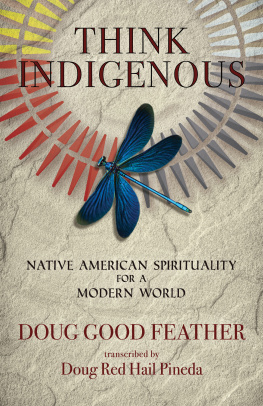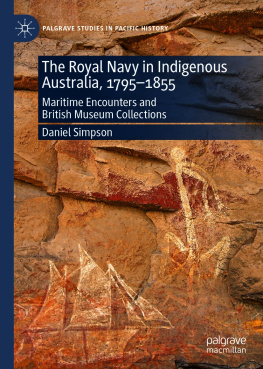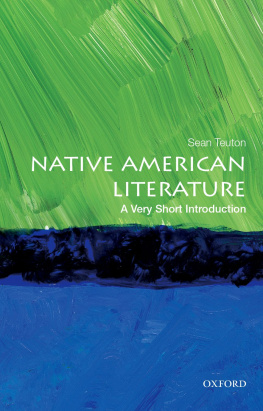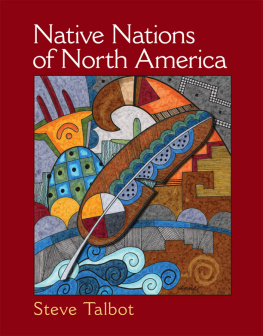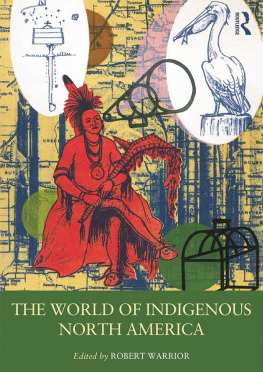Daniel Wildcat - Red Alert!: Saving the Planet with Indigenous Knowledge
Here you can read online Daniel Wildcat - Red Alert!: Saving the Planet with Indigenous Knowledge full text of the book (entire story) in english for free. Download pdf and epub, get meaning, cover and reviews about this ebook. year: 2009, publisher: Fulcrum Publishing, genre: Romance novel. Description of the work, (preface) as well as reviews are available. Best literature library LitArk.com created for fans of good reading and offers a wide selection of genres:
Romance novel
Science fiction
Adventure
Detective
Science
History
Home and family
Prose
Art
Politics
Computer
Non-fiction
Religion
Business
Children
Humor
Choose a favorite category and find really read worthwhile books. Enjoy immersion in the world of imagination, feel the emotions of the characters or learn something new for yourself, make an fascinating discovery.
- Book:Red Alert!: Saving the Planet with Indigenous Knowledge
- Author:
- Publisher:Fulcrum Publishing
- Genre:
- Year:2009
- Rating:5 / 5
- Favourites:Add to favourites
- Your mark:
- 100
- 1
- 2
- 3
- 4
- 5
Red Alert!: Saving the Planet with Indigenous Knowledge: summary, description and annotation
We offer to read an annotation, description, summary or preface (depends on what the author of the book "Red Alert!: Saving the Planet with Indigenous Knowledge" wrote himself). If you haven't found the necessary information about the book — write in the comments, we will try to find it.
Red Alert!: Saving the Planet with Indigenous Knowledge — read online for free the complete book (whole text) full work
Below is the text of the book, divided by pages. System saving the place of the last page read, allows you to conveniently read the book "Red Alert!: Saving the Planet with Indigenous Knowledge" online for free, without having to search again every time where you left off. Put a bookmark, and you can go to the page where you finished reading at any time.
Font size:
Interval:
Bookmark:

2009 Daniel R. Wildcat
All rights reserved. No part of this book may be reproduced or transmitted in any form or by any means, electronic or mechanical, including photocopying, recording, or by an information storage and retrieval systemexcept by a reviewer who may quote brief passages in a reviewwithout permission in writing from the publisher.
Library of Congress Cataloging-in-Publication Data
Wildcat, Daniel R.
Red alert! : saving the planet with indigenous knowledge / Daniel R.
Wildcat.
p. cm.
Includes bibliographical references.
ISBN 978-1-55591-637-4 (pbk.)
1. Human ecology. 2. Indigenous peoples--Ecology. 3. Traditional
ecological knowledge. I. Title.
GF41.W53 2009
304.2--dc22
2009019705
Printed in Canada on recycled paper by Friesens Corp.
0 9 8 7 6 5 4 3 2
Design by Jack Lenzo
Cover image: Inheriting the Legacy by Bunky Echo-Hawk
Fulcrum Publishing
4690 Table Mountain Drive, Suite 100
Golden, Colorado 80403
800-992-2908 303-277-1623
www.fulcrumbooks.com
The Spiritual Person of the universe, God, if you will, grant us wisdom as we talk about issues that are so very important to us.
Angayuqaq Oscar Kawagley,
Yupiaq elder and scholar
Introduction
The Climate Is Changing
and, Well, It Should
Would it not be more accurate to say that the North American wants to use reality rather than to know it? In some mattersdeath, for examplehe not only has no desire to understand it, he obviously avoids the very idea.
Octavio Paz, The Labyrinth of Solitude
I get angry when I think about global warming, or global burning, as I prefer to designate this world phenomenon, the reasons for which will become quite clear in chapter 6. I get angry because I know the history of involuntary removals and relocations indigenous peoples throughout the United States and around the world have endured. So when nearly a decade ago I began hearing the reports of what was beginning to manifest itself on the landscapes and seascapes of the circumpolar arctic and banks of the Yukon River in Alaska, I got angry. Angry because I thought, Here we go againanother removal of indigenous peoples.
Three Removals, Now a Fourth
Contrary to what is found in US history books, many of us encountered in our peoples histories at least three removal attempts. Many of us have trails-of-tears stories. From one shore to the other on this continent, there are many stories of removal from indigenous homelands, stories beyond the most well-known removal of the so-called civilized tribes of the southeastern United States to Oklahoma in 1838. For many, these removals were deadly. For survivors, who understood their tribal identities as peoples as emergent from their homelands, these removals were devastating.
The stubborn resilience of our ancestors was again sorely tested during a second displacement: the removal of our children from our homes and families to off
reservation boarding schools. These removals were done by friends of Indians who wanted to solve the Indian problem with the classic liberal solution to all social problems: education. But, in this case, that meant education in off-reservation boarding schools. One of the surest methods for destroying a people, their families, communities, and culture is to take their children away. This social removal, which continued well into the twentieth century, still has lasting and dysfunctional consequences for the health and wellness of American Indians and Alaska Natives. In the present era, so much talk is directed toward nation
building activities, yet this removal constituted nothing short of a nation-destroying effort from which indigenous peoples are still recovering.
The removal of children takes on an even more sinister air when it is understood that boarding-school education programs were premised on the necessity of stripping Native children of all features of their unique tribal identities and cultures. Education was only one, albeit the most potent, representative of the final removal attempt waged by every social institution that American society could bring to bear on who we were as indigenous peoples. Religion, law, economy, education, and family, all of the social institutions of the late nineteenth century, were attacked as civilization sought to remove from our peoples our Indiannessour indigenousness. These institutions brought to bear on our peoples Captain Richard Henry Pratts guiding principle for Indian education, as summed up at the nineteenth annual National Conference of Charities and Correction held in Denver, Colorado, in 1892: Kill the Indian in him and save the man. This principle resulted in a policy now widely recognized as the embodiment of cultural genocide.
Despite these three removalsgeographic, social, and psycho-culturalmany American Indians and Alaska Natives still have their languages, songs, ceremonies, and tribal identities. For those who faced all three removal attempts, there has been an intergenerational transmission of trauma, yet also often a tenacious resilience. The legacy of these histories is complex, even contradictory, and difficult to neatly summarize. Fortunately, a good number of American Indians and Alaska Natives have maintained thousand- and hundred-years-old relationships with specific landscapes and seascapes. The knowledges embodied in these deep spatial relationships to homelands have served indigenous peoples well when governmental policies and programs offered only suffering and sadness. In a world where increasing numbers of people live in highly manufactured landscapes of suburbs and subdivisions, the ancient deep spatial knowledges of people and place held by American Indians and Alaska Natives are crucial if humankind is to find sustainable ways to live in a life-enhancing manner.
Sadly, some of us now face another removal. Of course, this time things are different. This removal is not simply a governmental social policy imperative of the nonindigenous majority population. This relocation is mandated by a much deeper, more fundamental crisis: the way we live. Not everyone on the planet, but those of us who are immersed in or living in the interstices of modern industrial and now postindustrial societies. As ice sheets and glaciers melt, permafrost thaws, and seacoasts and riverbanks erode in the near and circumpolar arctic,
peoples indigenous to these places will be forced to move, not as a result of something their Native lifeways produced, but because the most technologically advanced societies on the planet have built their modern lifestyles on a carbon energy foundation that has several problematic consequences and one deadly consequence: the emission of carbon dioxide.
In a physical sense this reality is what will probably be known, as writer Bill McKibben pointed out nearly fifteen years ago in The New York Times Magazine , as the most fundamental chemistry lesson for the twenty-first century: burning one gallon of gasoline in your automobile inevitably results in the placement of five and a half pounds of carbon dioxide, the major culprit in global burning, into the atmosphere. Keep in mind that transportation only accounts for about 33 percent of our carbon footprint in the United States, while residential and commercial buildings account for 39 percent, with the balance of our carbon
dioxide produced by industrial activities, and one can see that addressing our dependence on fossil-fueled cars and trucks is only the tip of the proverbial iceberg, and a melting one at that, but one that must be addressed immediately. For societies with cultures entrenched in carbon-based energy technologies, the magnitude of the changes that need to be made in how we, humankind, think and live are immense. The removals resulting from our climate-burning activities will affect every nation on the planet.
Font size:
Interval:
Bookmark:
Similar books «Red Alert!: Saving the Planet with Indigenous Knowledge»
Look at similar books to Red Alert!: Saving the Planet with Indigenous Knowledge. We have selected literature similar in name and meaning in the hope of providing readers with more options to find new, interesting, not yet read works.
Discussion, reviews of the book Red Alert!: Saving the Planet with Indigenous Knowledge and just readers' own opinions. Leave your comments, write what you think about the work, its meaning or the main characters. Specify what exactly you liked and what you didn't like, and why you think so.

